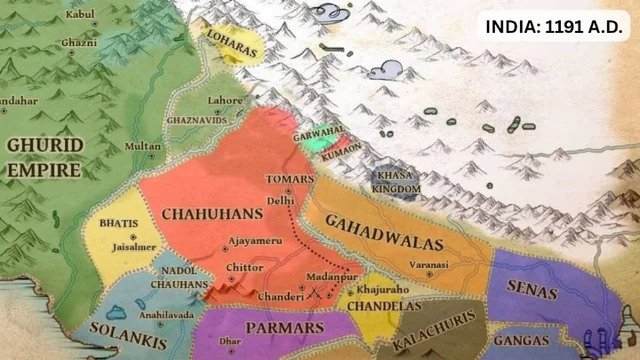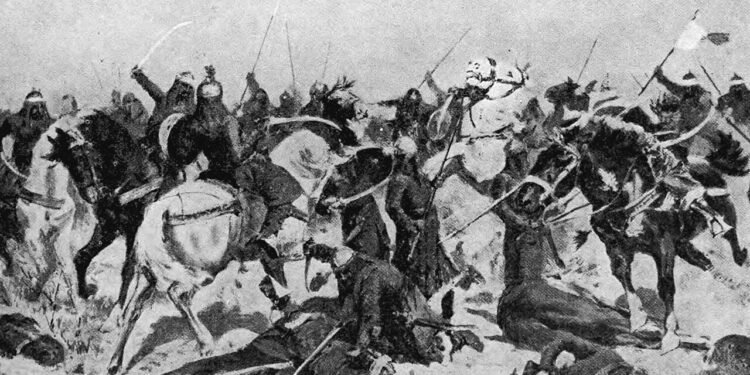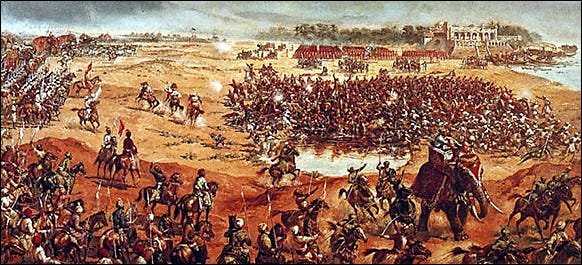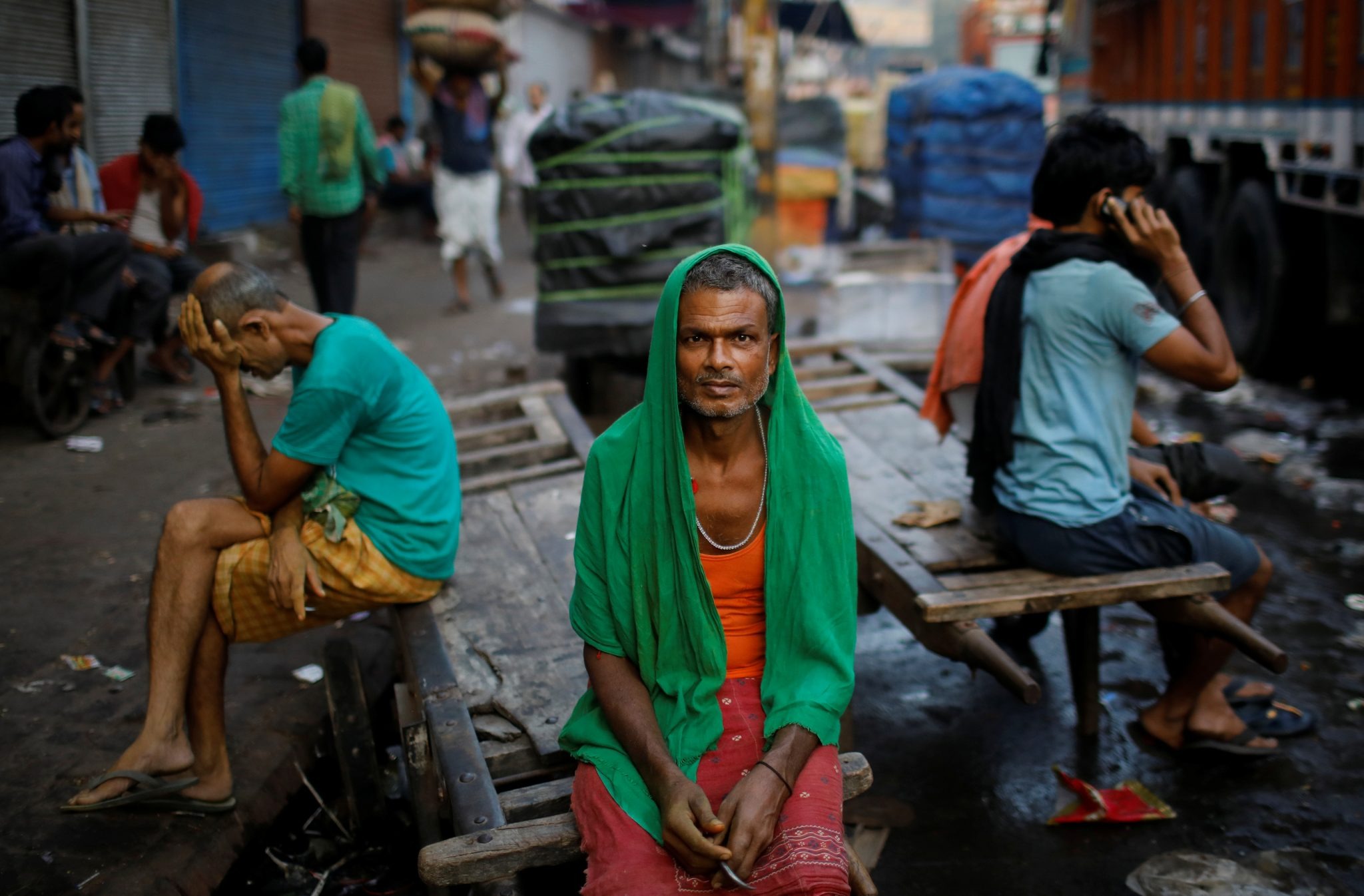Introduction
The Second Battle of Tarain in 1192 pitted Muhammad of Ghor’s reorganized, mobile cavalry army against Prithviraj Chauhan’s numerically superior but cohesion‑strained Rajput host, ending in a decisive Ghurid victory that shattered the Chauhan realm and opened the doab to subsequent conquests. The outcome hinged on night maneuver, horse‑archer attrition tactics, and a late reserve shock that broke the Rajput center after hours of skirmishing on both flanks.

Strategic lead‑up
After his setback in the earlier Tarain encounter, Muhammad of Ghor withdrew, purged and humiliated lax commanders, and spent months rebuilding a fast, disciplined cavalry force of Tajiks, Afghans, and Turks with an emphasis on firepower and mobility. Meanwhile, the Rajputs besieged Bhatinda without engines, relying on starvation; Prithviraj delegated the siege and returned to Ajmer, made alliances, but did not strengthen early warning systems or frontier screens. In 1192, the Ghurid counteroffensive retook Bhatinda within weeks and drew Prithviraj back toward the familiar Tarain field.
Forces and deployment
Reported figures are inflated by tradition, but the Rajputs likely mustered on the order of 100,000 with around 300 elephants, while Muhammad advanced with some 52,000 cavalry, arranged for maximal maneuver with four wings of light horse archers and a deep, elite reserve of armored ghulam lancers. The Rajputs formed a linear array with elephants forward, but their confederate composition and dispersed detachments from earlier in the year reduced cohesion and flexibility.
Ghurid ruse and night approach
Feigning intimidation and proposing a face‑saving withdrawal while “awaiting” his co‑ruler’s consent, Muhammad masked a nocturnal approach march that placed the Ghurid army near the Rajput camp before dawn. Rajput military ethos discouraged night action; with few sentries posted, the predawn strike shocked the camp and forced a hurried re‑formation under pressure.
Battle phases
Opening shock: A surprise cavalry assault at daybreak caused heavy confusion; Rajput countercharges stabilized matters, but only after elephants were disrupted by concentrated harassment.
Flank attrition: Ghurid light horse archers engaged in successive waves, showering arrows and executing feigned retreats and the “Parthian shot,” drawing in Rajput wings without being fixed to close combat.
Prolonged skirmish: Hours of maneuver and archery thinned Rajput ranks and morale, while Ghurid quivers ran low, raising the stakes for a decisive phase.
Reserve shock: When Rajput commanders pulled units from the center to prop battered flanks, Muhammad hurled his 12,000 heavy ghulams into the weakened middle, breaking through and then rolling the engaged wings from rear and flank.
Collapse and pursuit
Once the Rajput center ruptured and encirclement began, battlefield cohesion collapsed; some formations died in place according to rajputana martial codes, while others fled under relentless cavalry pursuit. Prithviraj Chauhan was captured and executed; the ensuing rout left the Chauhan dominions open to rapid occupation and dismantling.
Why Muhammad’s plan worked
Operational deception: A pacifying letter and withdrawal feint set favorable conditions for a night march and pre‑dawn strike against an unprepared camp.
Tactical asymmetry: Composite‑bow horse archers imposed a running fight, refused decisive melee, and attrited elephants and heavy cavalry until local weaknesses appeared.
Cohesion and command: A single commander wielding modular cavalry groups and a disciplined strategic reserve outmatched a confederated host that struggled to coordinate flanks, center, and siege detachments.
Timed reserve: The ghulam lancer reserve delivered concentrated shock precisely when and where the Rajput line had been thinned to buttress flanks.
Immediate consequences
With Tarain lost, Muhammad of Ghor rapidly secured Prithviraj’s territories, installing garrison and administrative frameworks to hold the doab and key corridors. Within two years, Ghurid arms defeated the Gahadavalas (1194), and over the next decade Ghurid momentum overran much of the Gangetic plain as far as Bengal, creating conditions for a durable Muslim political presence in North India despite the Ghurid empire’s later fragmentation.
Military takeaways
Screening and alerts: The absence of robust border screens and night pickets invited operational surprise; standing procedures against night approach were critical.
Countering horse archers: Heavy cavalry and elephants were disadvantaged without coordinated missile support and flexible pursuit discipline against feigned retreats.
Reserve doctrine: Retaining a fresh shock reserve to exploit enemy re‑allocations can decide battles after attritional skirmishing reaches exhaustion.
Siege dispersion risk: Prolonged siege commitments can cripple field‑army mass and responsiveness when a mobile adversary returns rapidly to the theater.
High‑yield anchors
Date and place: 1192, fields of Tarain, after Bhatinda’s seesaw and a year’s interval from the first battle.
Orders of battle: Ghurids c. 52,000 cavalry with four light cavalry divisions plus 12,000 heavy ghulams; Rajputs c. 100,000 with c. 300 elephants in a linear array.
Tactics: Night approach; predawn strike; horse‑archer feints and Parthian shot; reserve lancer breakthrough into a weakened center; envelopment of flanks.
Outcome: Prithviraj captured and executed; Chauhan domain overrun; subsequent defeat of Gahadavalas (1194); Ghurid reach to Bengal within a decade.
Conclusion
Tarain (1192) was decided less by raw numbers than by deception, mobility, and reserve timing: Muhammad of Ghor’s modular cavalry and disciplined command shattered a larger, less cohesive host through surprise, skirmish attrition, and a perfectly timed armored thrust, inaugurating a new military‑political dispensation in North India that endured long after his own empire’s eclipse.





